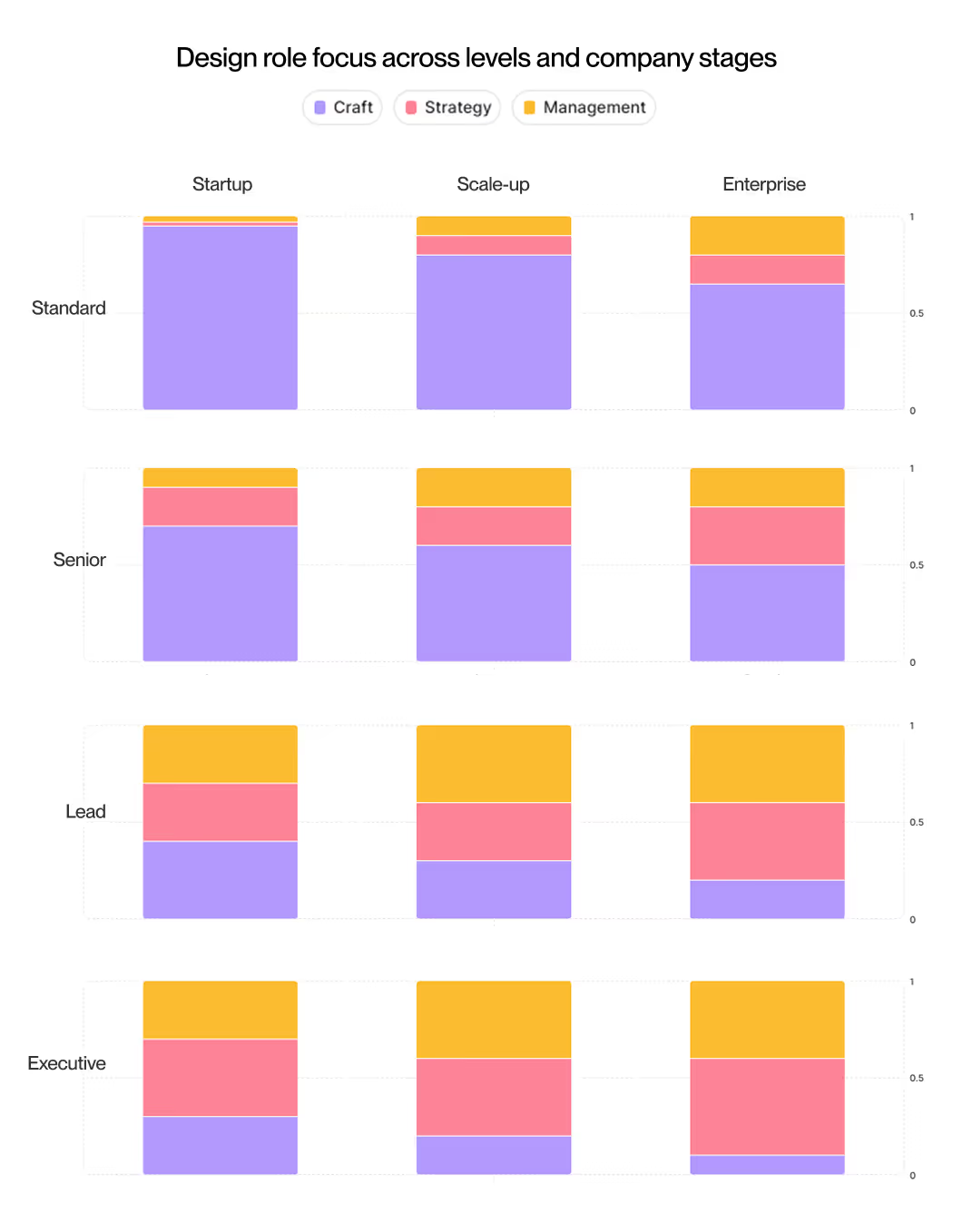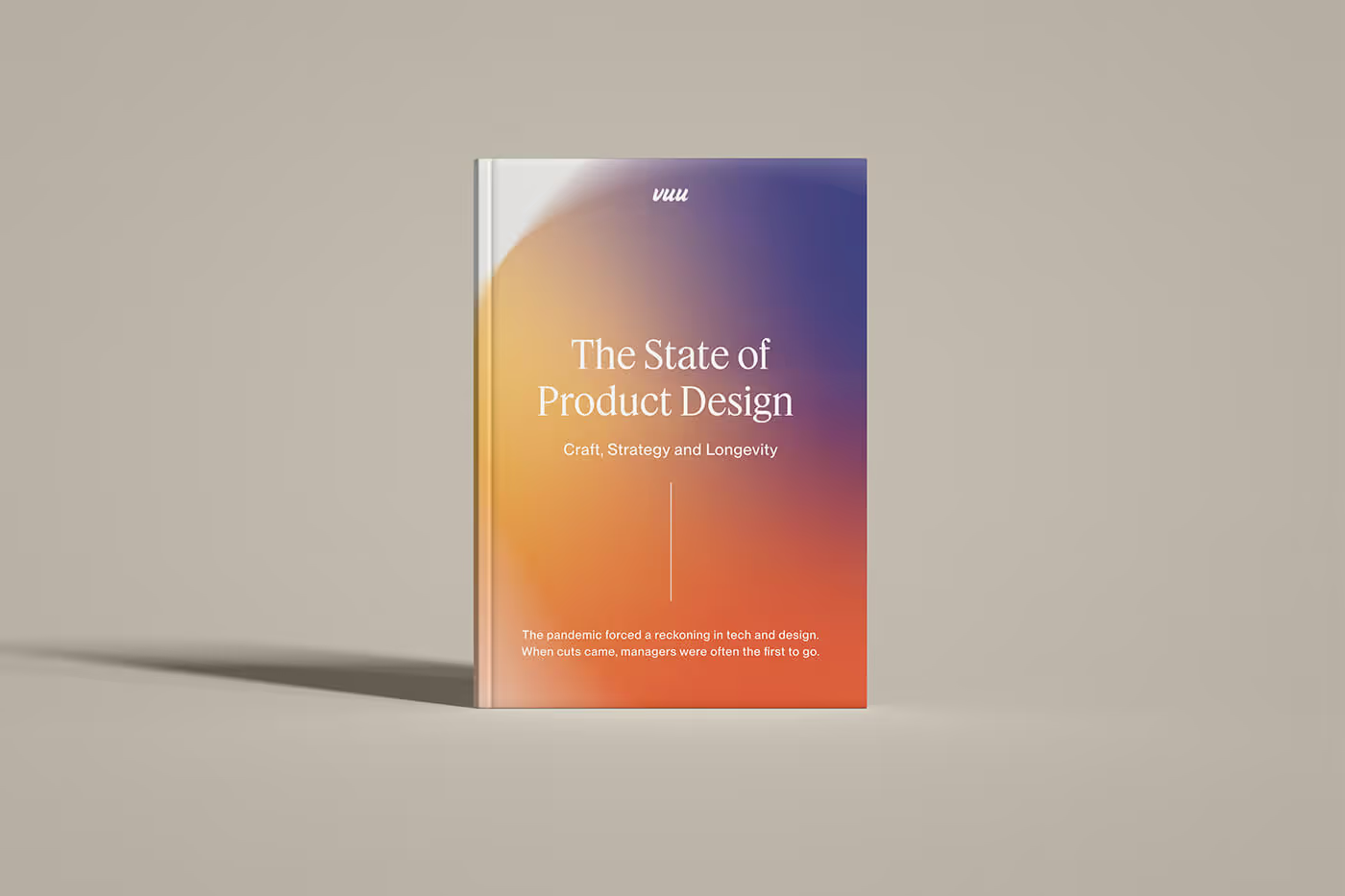The pandemic forced a reckoning in tech and design. When cuts came, managers were often the first to go. What was left were the doers: the designers and engineers still pushing pixels, testing prototypes, shipping code. It was a harsh reminder that management alone doesn’t guarantee relevance. The ability to execute, to contribute directly to the craft, still matters.
That’s a key lesson for where product design sits today. We can’t frame careers as a binary choice between maker or manager. To stay relevant, designers need a mix of craft, strategy and leadership. The proportions change with experience and environment, but none can be left behind.
Lessons from the field
I learned this in startups. Over ten years I lived through full product lifecycles: pivots that arrived overnight, the stress of a shrinking runway, the discipline of deciding what not to build. There were no guardrails; we made them up as we went. That freedom was exhilarating but also brutal. One design choice could come back to bite you months later when customers churned or revenue dipped.
This taught me resilience. Many designers move on after a year or two. LinkedIn data shows that in tech startups, average tenure is just 1.9 years, compared with the Australian national average of 3.3 years. Variety is valuable, but so is staying long enough to see the ripple effects of your decisions. Living with those consequences — good or bad — is how judgment is built.
At the lead and executive level, another tension emerges. Craft shrinks from your day-to-day responsibilities, but the muscle still matters. Too many design leaders lose their eye for detail. They can present strategy but miss when quality slips. I’ve kept mine alive through side projects and tinkering. Without that connection, leadership risks becoming abstract. And if you can’t evaluate design quality, how do you credibly lead others?

Management in focus
The chart makes it clear: the steepest shifts occur at the lead and executive levels. In startups, leads are still makers as much as managers. By the scale-up stage, management gets heavier — coaching, hiring, and building process take centre stage. In enterprises, leadership is less about making things and more about creating the conditions for others to succeed.
Executives accelerate along the same curve. They may still shape design directly in a startup, but in larger organisations their influence is felt through culture, governance, and systems rather than hands-on craft.
This is why management roles face the most scrutiny. In downturns, they are often treated as overhead. Yet when leaders stay long enough to guide teams through pivots, budget cuts, and scale demands, they add resilience that craft alone cannot provide. The role isn’t about being the most hands-on. It’s about multiplying the impact of everyone else.
A blended path forward
Too often, designers are pushed toward two supposed paths: go deep in craft or move into management. The truth is, it’s never that binary. A resilient career blends all three muscles — craft, management, strategy — even if one dominates at a given time.
If your current role doesn’t stretch all of them, find another outlet. Keep craft alive with side projects. Exercise strategy by working with stakeholders outside your bubble. Grow management skills through mentoring. The point isn’t to do everything equally, but to never let any one muscle atrophy.
The future of product design won’t belong to those who specialise at the expense of breadth. It will belong to those who can adjust their mix, staying fluent, resilient, and grounded in both detail and direction. Don’t wait for your role to give you that balance. Design it yourself. That’s how you stay sharp, and that’s how you stay valuable.



